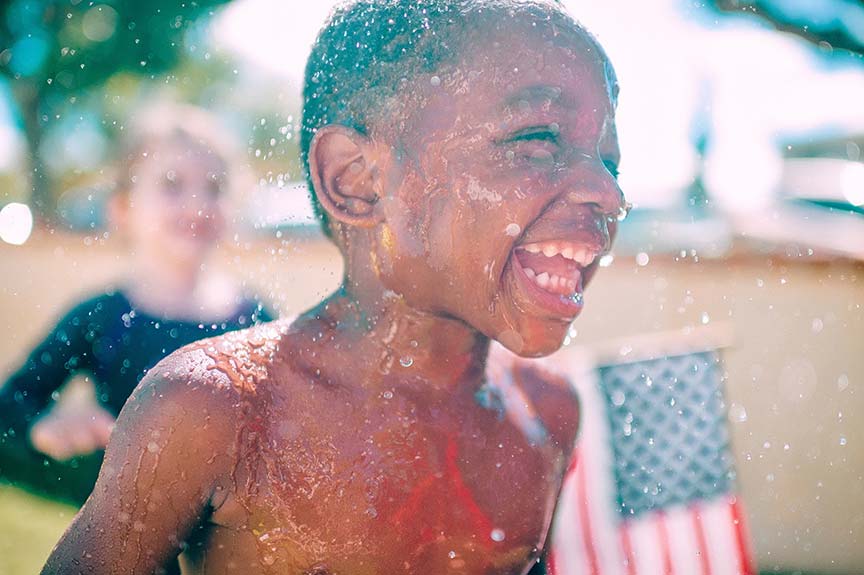I had the occasion this past week to watch a BBC documentary that was really amazing and the story was for every parent out there that has a child with Sensory Processing Disorder. It is the story of an older gentleman who woke up one day to find that his total sense of proprioception was gone. He had no idea how to feel movement and literally felt completed disabled in his ability to use his body. All of his muscles were there, he had the joints, but the brain had lost all sense of “feeling” movement and therefore the body could not be commanded to move.
So many times I have found myself trying to explain to families what it really feels like for their child. I would say to them things like: If your child gets his arm in the sleeve, he has no idea how to produce the arm to get to the other side. As soon as his eyes could no longer see his arm, he would be unable to produce the movement forward. So many children come to us with the label of being a “visual learner” or the parent would say that before their child engages in a new and novel activity, they would first watch with their eyes before making a decision to join or not. When we do Interactive Metronome testing, it very frequently is the exercises with “both heels” that are the worst score because these are the only tasks on the test where the child cannot see where the trigger is located for them to reach.
The main character in this documentary decided he was not going to give up on life and figured out how to use his vision to plan his movement forward. He re-taught himself to walk by using compensatory vision and went further to add gestures to his communication. It is an amazing story and one of great dedication and hard work. He finally got to scientists who wanted to figure out what this meant. With brain scans they found that when he engages in movement his right occipital lobe lit up very strongly, showing a lot of hard work in that area of the brain. I wish they had shown us the comparison of a person with an intact nervous system as a comparison, but I remember from multiple trainings that several areas in the brain are supposed to light up, crossing over into the parietal and temporal lobe.
Bottom line is that these children have to work much harder than their peers to accomplish anything with their body and they frequently get labeled as a “behavior” problem with no acknowledgement whatsoever to the strength and determination they are using to cope with every day activities.
The scientists were astounded by the amount of work that had to occur in the occipital lobe to achieve what this man had done. He had the intrinsic motivation and drive to get beyond his difficulty. The documentary never went into detail as to the origin of “how” he may have lost his proprioceptive sense and they assumed it fell under the domain of “acquired brain injury”, which really meant that they had no hope for this sense to return again.
In children with developmental delay, who struggle with sensory processing disorder, this particular sense impacts greatly on the development of praxis or “motor planning”. The profound impact of this can be more clearly understood in watching this documentary, but in essence it means that when one sense is not doing the job correctly, other senses have to step in and take over. And, as with this man, children have to work incredibly hard to do it. Some children develop stereotypical behavior, that we call “stimming” or “ticks” when they seemingly involuntarily start moving their body. These are nervous system responses to a non-integrated nervous system. Other children want to crash and bang into things, will squeeze you too hard, will bite, pinch and hit hard in an attempt to feel, and because of their limited understanding, would not even know if they are hurting you. Others would even go into self harm as they attempt to simply just “feel” something and the more frustrated they become, the more they lose any gainful compensation and the desperation fuels further self harmful behavior. Others are more “silent” and simply avoid participation in any new and novel activity that they have not figured out with their eyes as yet and even then, they may decide the effort is too great. And so we have the trajectory of developing a praxis difficulty, more specifically called a somatodyspraxia.
Bottom line is that these children have to work much harder than their peers to accomplish anything with their body and they frequently get labeled as a “behavior” problem with no acknowledgement whatsoever to the strength and determination they are using to cope with every day activities. Thankfully, as this is seen under the category of developmental delay, it is not a brain injury, and lack of development in this system can be woken up with therapy. My heart goes out to all those children who have no idea that their bodies are reacting differently to life than their peers, who are trying hard to keep up even at the cost of frustration and behavior and whose self esteem is being attacked every day due this enormous insecurity in their bodies.
I am including a link to my facebook page so you could view the documentary directly from the post I made just a couple of days ago. Please watch it.


Recent Comments